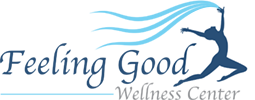5 Tips to Keep Pain And Sadness At Bay During The Fall Season
If you are someone who can tell the weather is changing not by looking out the window, but by the way your mood feels or the way your body feels, then you know about the effects of season changes.
Some people are particularly sensitive to low levels of sunlight and react to overcast days by feeling blue. This condition is called Seasonal Affective Disorder or SAD. Moreover, people with chronic pain such as fibromyalgia, arthritis, or general muscle pain are often particularly sensitive to feelings of depression. In other words, depressive feelings make their pain worse. And when you have increased pain, you are likely to feel more depressed.
It’s like we are talking about a circular motion, where one condition makes the other worse and vice versa.
It does not really have to be this way. Here are some tips to keep this circular motion from starting off in the first place:
- Develop a conscious understanding about two links: A) the link between the weather and mood, B) the link between mood and pain. Be prepared; acknowledge within yourself that these links exist.
- Become good friends with the weatherman! Check the weather’s patterns and begin to learn the patterns of sunny hours or sunny spots. Then go out of your way to schedule an hour of being out in the sun on a daily basis, or at least 3 times a week.
- Ask yourself “what thoughts are just going through my mind.” Examples of negative thoughts that affect your mood and therefore your pain are: “I hate Fall and Winter, I just have to suffer through them.” Notice a strong element of All or Nothing Thinking in there. Instead, replace that thought with something like: “Although the overcast weather makes me feel down and my pain gets worse that way, but I will find sunny patches when I can allow the sun rays get absorbed in my body, then my body won’t have that negative reaction and I can get through the season without necessarily feeling worse.”
- Remain physically active. Even though the warmth of the summer days make the idea of being physically active more enticing, but you know that you owe it to yourself to give yourself the benefit of keeping your joints and your muscles active. Hibernating, staying in bed, resting more than what your actual rest times are will backfire. Look into going for a walk, sign up for some gentle swimming, see about taking up Pilates or yoga or both. You’ll be doing your pain condition and your mood a lot of good this way.
- Talk openly about your condition and ask for help. There is no shame or stigma on how you are genetically formed. So, your brain reacts to overcast conditions. That is the same as indicating the color of your eyes. Let people know how you are planning on taking charge of your needs by scheduling “sun times” and by maintaining a positive attitude about the whole thing and by scheduling physical activities.
I am Dr. Katie Dashtban. As a Health Psychologist, one of my jobs is to help people make attitudinal and behavioral changes that help them in coping ideally with their medical conditions.
Call me or write to me with any questions: 831-621-1150 or 510-400-6160.




